Healthcare compliance training touches every part of post-acute care organizations. As regulations tighten and patient privacy standards […]
Home care marketing is a vital part of your business. Sure, your primary objective is to provide the best possible care to your clients. But without an effective marketing plan, nobody will know just how terrific your home care agency is.
But with so many available marketing channels and advertising options, coupled with often contradictory advice, where do you even begin? You don't want to waste precious time, money, and resources on the wrong strategy.
To save you time researching and deliberating which marketing methods will move the needle, we’ve compiled 14 proven marketing strategies for home care agencies that you can use straight away.
14 Effective Marketing Strategies for Home Health Care Agencies
Here are 14 practical home care marketing tips to help you promote your business and increase revenue.
1. Ask for referrals from current clients
Referrals from current (and past) clients are an excellent way to promote your home health care agency. Nothing is more powerful than social proof in the form of testimonials and reviews. And the best way to get those referrals is by developing a solid relationship from the start, so it’s much easier to ask for a referral later down the line.
According to the 2020 Home Care Benchmarking Study, current and past clients are the top source of new referrals.
2. Optimize your Google My Business profile
Google My Business (GMB) lets you set up a free business profile on Google and connect with new potential customers inside the Map pack.
Since local map packs are shown in most local search results, this is a critical element of any well-rounded home care marketing strategy:
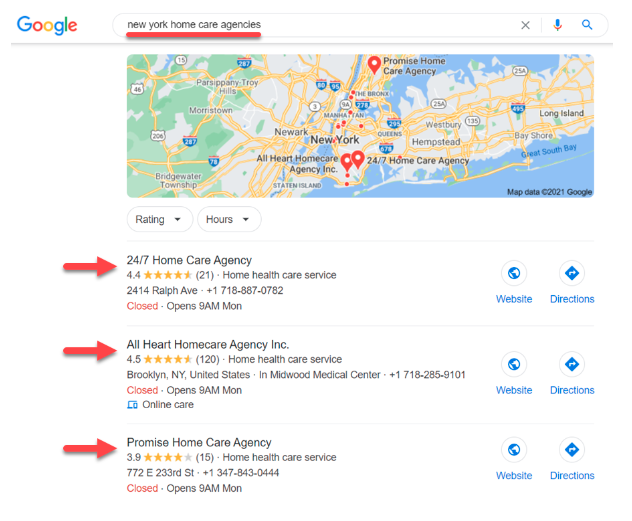 Here are four ways to optimize your profile to ensure you’re getting maximum value from it.
Here are four ways to optimize your profile to ensure you’re getting maximum value from it.
a) Provide as much information as possible
The most vital information on any listing is your business name, address, and phone number (NAP), so ensure these are correct and up-to-date. You can also include a business category, logo, website link, reviews, photos, and opening hours.
Research shows that a complete profile is twice as likely to be considered reputable, so make sure you complete your profile and help your business appear trustworthy online.
b) Make it easy for users to contact you
By including your phone number in your profile, prospective customers can call you from their mobile in Google Maps or Google Search.
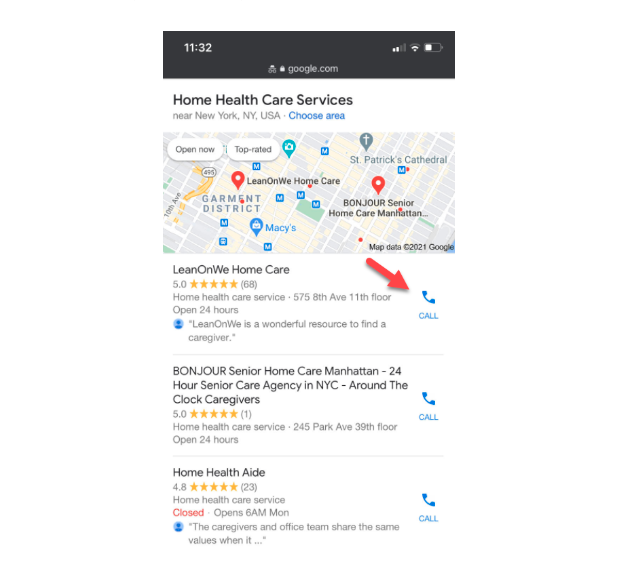
GMB also lets you activate instant messaging so people can chat with you online.
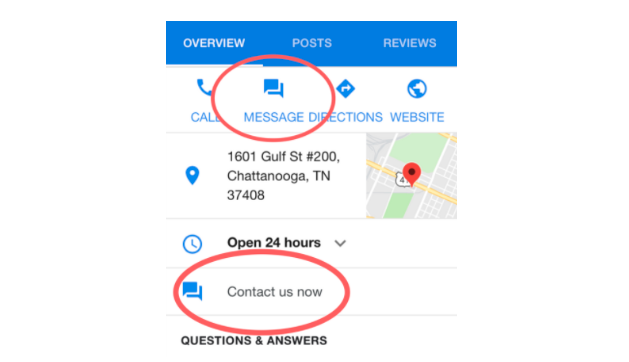
c) Regularly update and improve your profile
It’s essential to keep your GMB profile updated with the latest and most up-to-date information.
- Photos: Images help you stand out, plus businesses with photos get 42% more requests for directions than those that don't.
- Posts: Posting regular updates keeps your profile fresh and makes people interested to hear your news.
- Opening hours: Make sure you update your opening hours, especially with any holiday or seasonal variations.
d) Select appropriate categories
Your business category helps you appear in relevant search results. Your selection should be as specific as possible. For example, choose "home health care” rather than "health care".
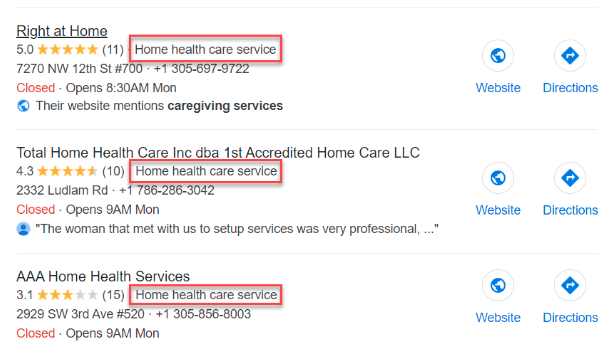
3. Develop an organic SEO strategy
Once you've optimized your GMB profile for placement in the local maps, the next step is to develop local landing pages on your website to rank in organic search results below the map pack.
The goal is to rank top of Google Maps AND the organic search results.
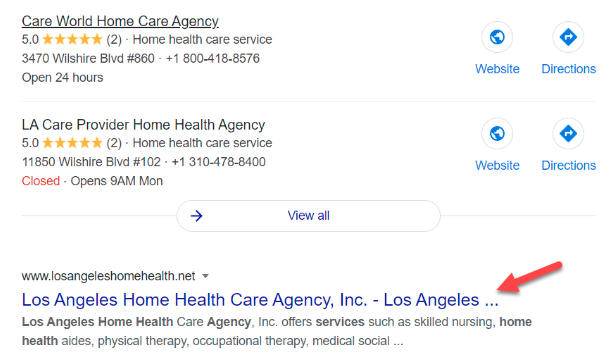 Remember to include the following items on the local landing page, or pages, if you have more than one location:
Remember to include the following items on the local landing page, or pages, if you have more than one location:
- Google My Business map.
- The location name in the title tag, URL, and the content.
- NAP – name, address, and phone number – plus opening hours.
- Reviews and testimonials from clients at the location.
- A short overview of the location.
Follow these organic SEO tips to outrank your local competitors.
4. Launch a Google Ads campaign
Local SEO can take time to work, so in the meantime, you can use the Google Ads platform to rank at the top of Google for your most important search terms.
Here’s an example for "san francisco caregiver agency":
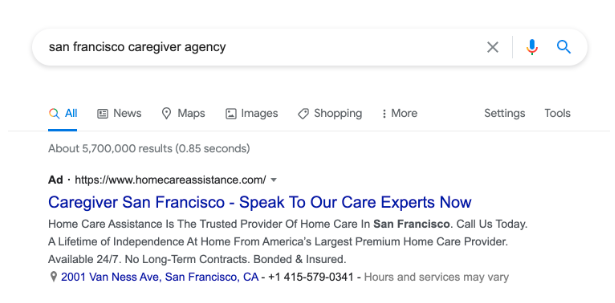
The key with this strategy is to ensure you are only bidding on keywords that could drive leads to your business.
Think about the types of things your clients, or people searching on behalf of them, might be entering into Google to find agencies that provide the services you offer.
When it comes to developing a profitable PPC campaign, follow this 3-step framework:
a) Keyword -- attracts the right traffic.
In our example above, Homecare Assistance in San Francisco are targeting several keywords, but three of those are #1 position:
- home care assistance san francisco
- eldercare services san francisco
- in home care services san francisco
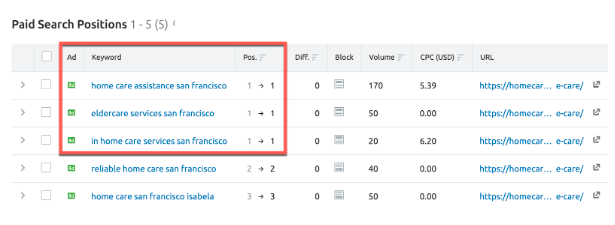
b) Ad copy -- wins the click.
If you compare the three ads for "san francisco caregiver agency", you can see the #1 position has a lot more details in the ad copy but still addresses the major points:
-
- Trust:
- “Home Care Assistance Is The Trusted Provider Of Home Care In San Francisco.”
- Independence and premium home care:
- “A Lifetime of Independence At Home From America’s Largest Premium Home Care Provider.”
- Available, flexible, and insured:
- Available 24/7. No Long-Term Contracts. Bonded & Insured.”
- Map location and contact details:
- “2001 Van Ness Ave, San Francisco, CA - +1 415-579-0341 - Hours and services may vary.”
- Trust:
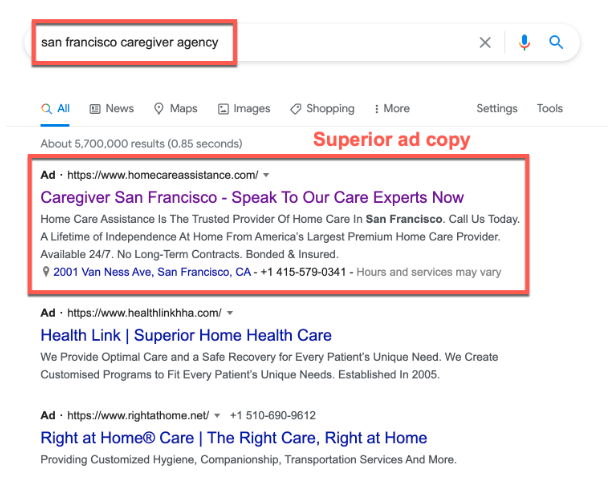
The ad copy not only positions the company as the largest home care provider, but also makes the decision to contact the company as frictionless as possible with 24/7 availability and no long-term obligations.
c) Landing page -- wins the conversion.
The landing page for the top ad contains all the essential details, including:
- The city name in the URL and on the page several times.
- The phone number is prominent throughout the page.
- A short overview of the care packages at the location.
- 5-star reviews and testimonials from clients at the location.
Bonus tip: connect your Google My Business profile to your Google Ads account so that you can add a location ad extension. This will make your ads eligible to show inside the local map pack:
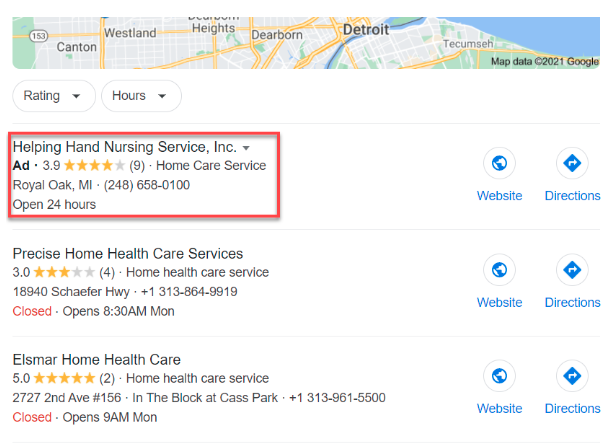
5. Collect reviews on key third-party websites
People do business with those they know, like, and TRUST. And there is no better trust signal than a bunch of 5-star reviews on independent third-party websites:
For every one-star increase that a business gets on Yelp, it sees a 5-9% increase in revenue. And when a product gets five-star reviews, the likelihood of it being purchased increases by 270%.
Think about the sites that people go to when researching companies that provide the services you offer, for example, Google Maps, Yelp, and industry review sites.
You want to proactively ask (not incentivize, as this is technically against Google guidelines) happy customers if they would be willing to leave a positive review on your chosen sites.
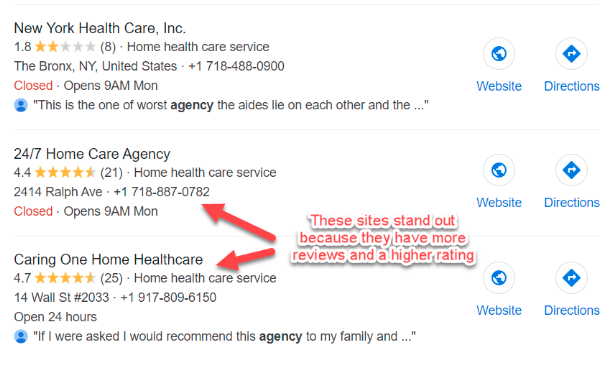
Ask at the point of service, and also send out an email after a certain period of time following the service that asks for a review with a link to your profile. This type of automation can passively grow your review count and help your agency stand out from the crowd.
Although it’s good to get positive reviews, don't forget to respond to any negative reviews you may receive. Taking the time to reply to every review and offer immediate corrective action if required will not only convert your prospects but also differentiate you from your competitors.
Research from Bazaarvoice revealed that seven out of 10 consumers changed their perception about a brand when it replied to a review as it showed they care about customers (41%), that it has great customer service (35%), and that it is trustworthy (22%).
Finally, remember to feature your reviews and testimonials on your homepage and services pages:
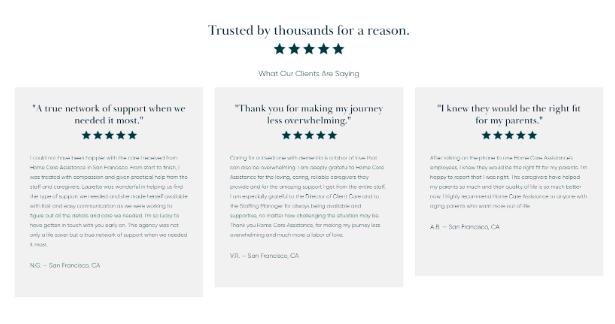
6. Use your blog to educate and attract website visitors
You can use your blog to attract and inform visitors about home care.
One effective strategy is to answer questions that your target audience may be searching for while researching the home health care process. For example, topics related to costs, benefits, how to screen out quality caregivers, etc.
A simple way to find these topics without having to invest in expensive SEO tools is to enter your business terms – such as “home health agency” or “caregiver agency” – and see what other topics auto-populate in the search dropdown and the People Also Ask box:
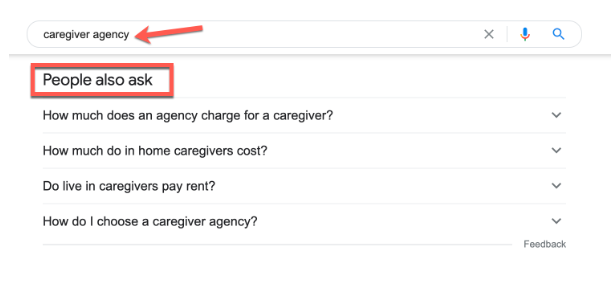
These sources tell you the exact terms people are researching related to your business.
By educating your audience, not only will you be able to bring more people to your website but also, more importantly, position yourself as a trustworthy source.
7. Amplify content with Facebook ads
Along with Google ads, Facebook advertising can help increase your revenue and amplify your blog content.
Use Facebook's audience and location targeting to promote educational blog posts, videos, and client reviews to people within a specific radius of your business:
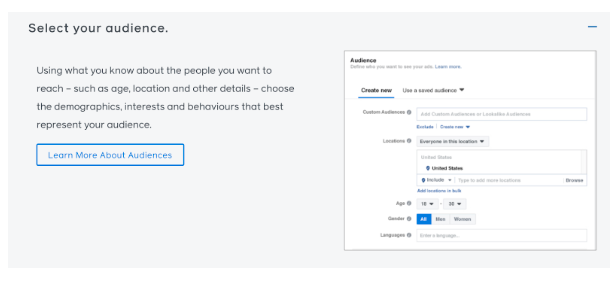
Facebook ads get your content in front of more eyeballs and build your brand.
8. Retarget warm website traffic
Retargeting people who’ve already visited your website is a smart way to get them back. Conversions on the first visit to a website are typically low, so getting people back for another visit increases your chances of conversion.
For example, you could run a video to people who visited your service pages within the last 30 days. The video could introduce the home care agency owner or showcase client video testimonials and have a CTA to schedule a free home care consultation.
Around 96% of first-time visitors are not ready to buy and will leave your site. But these visitors have already expressed an interest in your services and are more likely to take action.
Don't waste this warm traffic. Re-engage them and bring them back to your website. We recommend starting with Google, YouTube and/or facebook retargeting ads. You can manage all of these campaigns within each platform’s native ad manager, or from a central dashboard using a tool such as AdRoll.
9. Connect with local healthcare professionals
Connecting with other local healthcare professionals can provide a steady stream of referrals. Here’s a list of possible professional referral sources:
- Physicians, including House Call Physicians
- Occupational Therapists
- Hospital Discharge Planners
- Social Workers
- Nursing Homes
- Rehabilitation Centers (outpatient and inpatient)
- Adult Day Care Centers
- Hospices
- Assisted Living Facilities
- Skilled Nursing Facilities
- Home Health Agencies (Medicare Certified)
- Social Service Agencies
- Continuing Care Retirement Communities (CCRC)
- Disease-Specific Associations, e.g. MS or ALS
- Veterans Administration Programs
10. List your agency on industry lead sites
One of the best marketing sources is to list your home care agency on industry lead sites, such as Caring.com, SeniorAdvisor.com, and CareinHomes.com.
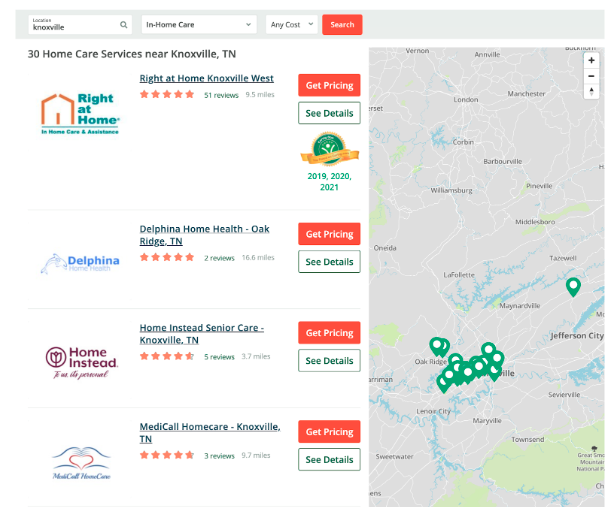
These sites usually get high rankings in the search results pages, and, as they are an independent source, consumers trust them.
For example, caring.com ranks in the #1 organic position for most “[location] home care agency” terms, so it would be wise to get your business listed and piggyback on the site’s existing rankings.
You can also purchase a featured listing on these sites, which will guarantee your business shows at the top of the list in your chosen service categories.
11. Use images and video to build your brand on social media
One of the best ways to build your brand on social media is by using images and videos. While text captions are good, images and videos attract users’ attention, especially on visual platforms like Instagram and Pinterest.
For home care businesses, using professional photography and illustrations, graphics, animations, and videos are a great way to appeal to a broader audience while looking professional and modern.
For example, Elite Home Health Care uses Instagram to share various photos, images, and graphics, including an employee of the month, advice and tips, and inspirational captions:
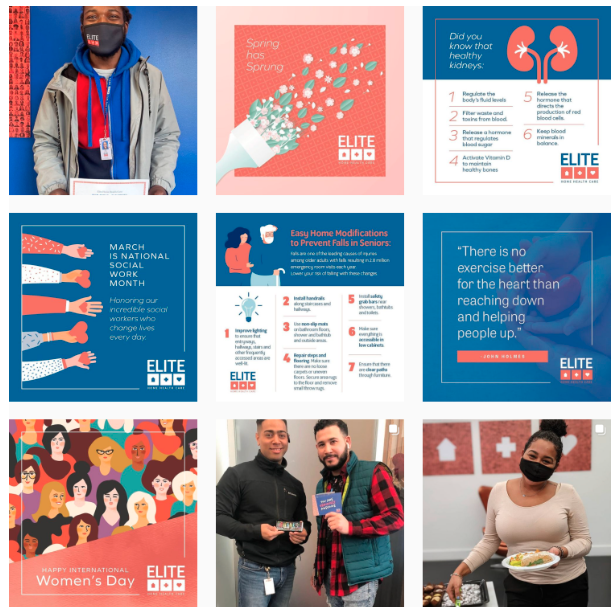
One excellent strategy is to have employees answer common questions and share on social. You could also run AMA days or show a “day in the life” type video of an employee. Not only is the information helpful, but it also helps humanize the brand.
12. Sponsor community events
Sponsoring and participating in community events gives your business visibility, boosts brand awareness, and gives your local community a chance to connect with your team.
13. Speak at educational seminars
Another area to tap into is speaking at educational seminars, including both in-person and virtual events. Universities and other institutions are always on the lookout for speakers who can share insights on healthcare topics. Reach out to these organizers and offer to present relevant topics.
Public appearances will establish your authority both locally and nationally and also broaden your professional network in home healthcare and caregiving.
14. Runs ads in local newspapers
While newspapers may not be as popular in the digital age, many people still prefer to read their local newspapers and check out the ads. So, it’s definitely worth running some ads in the local newspapers and seeing what kind of response you get.
Which Home Care Marketing Strategies Are You Going to Try?
We’ve narrowed your options down to 14 proven home care marketing strategies, but that doesn’t mean you should charge in and try to implement all of them in one go.
Take your time, to sift through the list and pick a few you can start with. For instance, not everyone will feel comfortable speaking at a seminar, but there’s no reason why you can’t start asking for referrals and collecting reviews and testimonials.
Whichever strategies you select, make sure you measure their effectiveness and, if necessary, adjust and optimize them accordingly.





